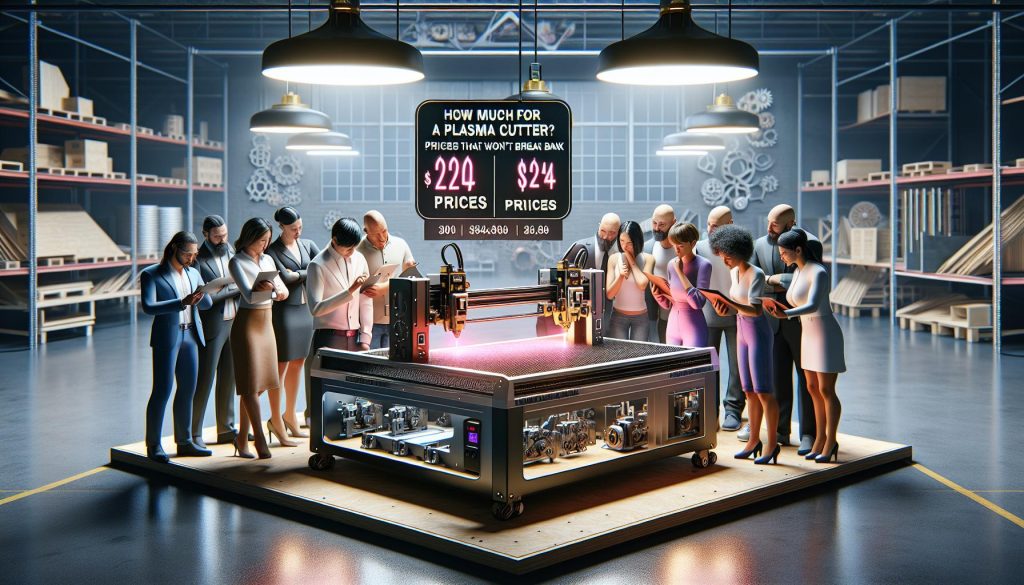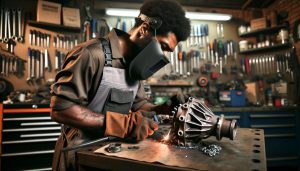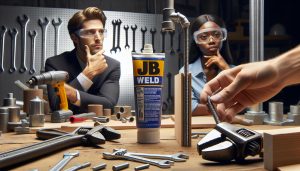Plasma cutters have revolutionized metalworking, making precise cuts on various materials like steel and aluminum more accessible than ever. As a highly efficient tool, they offer both beginners and seasoned welders options that can fit any budget. Understanding the costs associated with plasma cutters is essential, especially in 2024 when price fluctuations can significantly impact your workflow. Whether you’re a hobbyist looking to tackle weekend projects or a professional seeking to enhance productivity, knowing how much you should invest in a plasma cutter can save you from overspending and help you achieve your goals. This guide will explore current pricing trends and highlight options that won’t break the bank, ensuring you make an informed decision tailored to your needs. Keep reading to uncover the best value options for your plasma cutting needs in 2024!
Choosing the Right Plasma Cutter for Your Needs
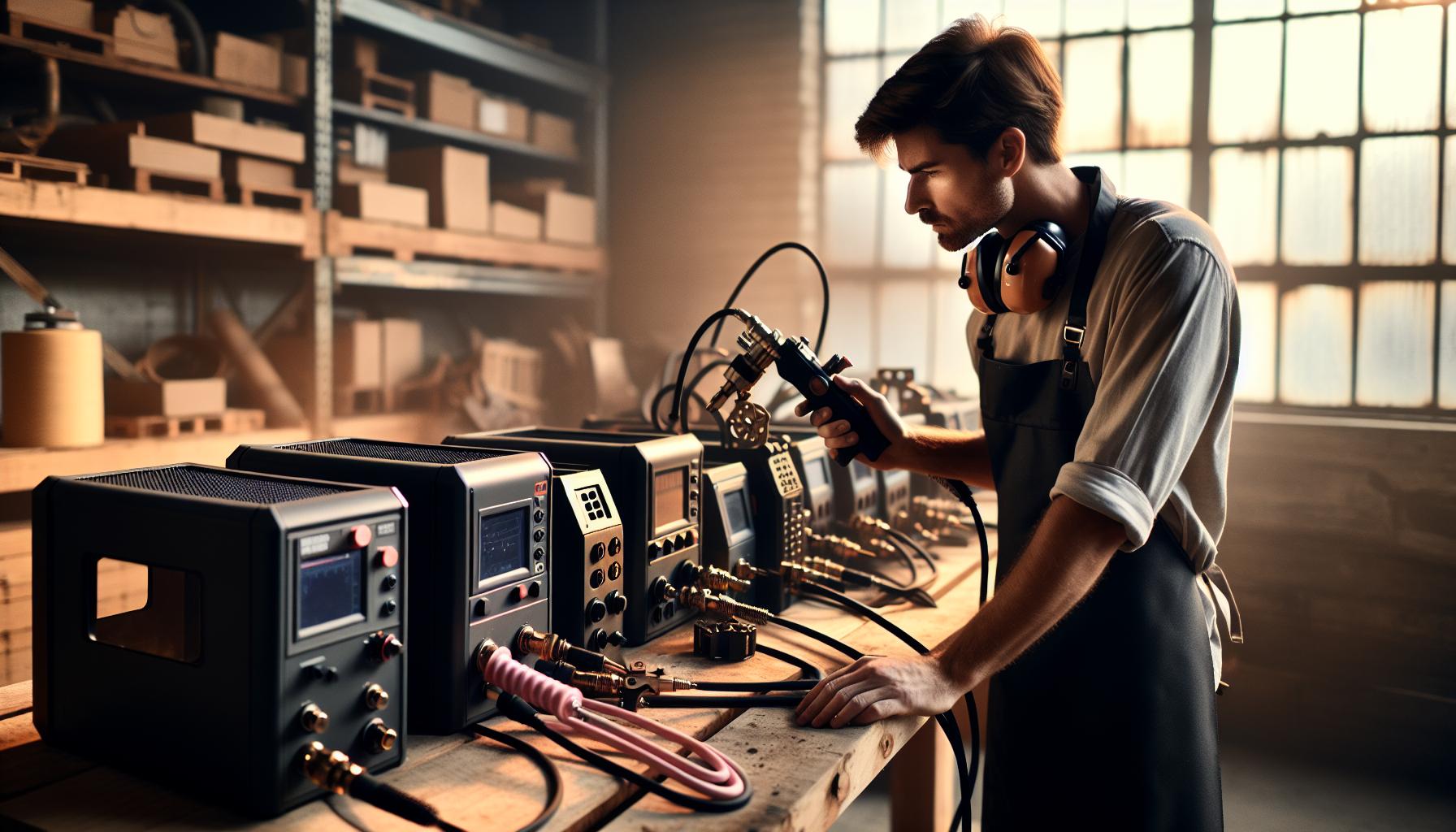
Choosing the right plasma cutter involves understanding your specific needs and how various features align with them. Plasma cutters are versatile tools used in applications ranging from automotive repair to metal fabrication. When selecting a plasma cutter, begin by considering the types of materials you’ll be working with, as different cutters are optimized for different metals like steel, aluminum, or stainless steel. The thickness of the material also plays a crucial role in deciding on a cutter; for instance, a model rated for cutting 1-inch steel may not be suitable for intricate work on thinner gauges.
Another critical factor is the power source. Plasma cutters come in different models, including air, nitrogen, and oxygen cutters. Air plasma systems are often preferred for general use due to their availability and cost-effectiveness, while nitrogen cutters provide cleaner cuts for specific applications but can be more expensive to operate. Additionally, ease of portability can be a game-changer for on-site jobs; lightweight units offer convenience but may compromise on cutting power compared to their heavier counterparts.
When evaluating brands, take the time to read user reviews and compare warranties, as durability and after-sales support can significantly impact your long-term satisfaction. Look for features such as pilot arc technology for cutting through painted or rusty surfaces and a fully adjustable amperage setting to give you control over cutting speed and efficiency. This nuanced approach ensures that you choose a plasma cutter that not only meets your current needs but also has the capability to grow with your skills and projects.
Ultimately, considering these factors helps avoid overspending on unnecessary features or underestimating your requirements, enabling you to find a solution that delivers quality without breaking the bank.
Factors Influencing Plasma Cutter Prices
When it comes to investing in a plasma cutter, understanding the factors that influence prices is crucial to making a smart purchase. The price range for plasma cutters varies significantly-from entry-level models around $300 to high-end professional machines that can exceed $5,000. A myriad of elements contributes to this variance, so it is important for potential buyers to grasp these dynamics before making a decision.
One of the primary factors affecting price is the power capacity of the cutter. Higher amperage machines can cut through thicker materials and operate at greater speeds, making them generally more expensive. For instance, a cutter with a power rating that allows for cutting 1-inch steel typically costs more than one rated for ½-inch material. Similarly, other capabilities such as cutting speed and duty cycle also impact cost; a machine designed for continuous operation will generally be pricier due to its robust construction.
Another significant influencing factor is the brand reputation and include customer service. Established brands with strong warranties and support tend to charge more as they often offer enhanced reliability and service. User reviews also play a crucial role; a tool that is consistently praised for performance may command a higher price compared to lesser-known brands that lack customer validation.
Additionally, the type of gases used during operation can affect initial price and ongoing costs. Machines designed to work with specialty gases like nitrogen may have a higher upfront cost and also incur greater ongoing expenses due to gas prices-this can be a key consideration for businesses that require high-quality cuts.
Finally, it’s essential to consider the accessories included with a plasma cutter. Some models come bundled with essential consumables such as tips, electrodes, and hoses, while others may charge these as extras. Evaluating the full package can help you avoid hidden costs and ensure you’re getting the best value for your investment.
By keeping these factors in mind, prospective buyers can confidently navigate the plasma cutter market, avoiding overspending and ensuring they choose a machine that effectively meets their needs.
Comparing Plasma Cutter Brands: What to Expect

When choosing a plasma cutter, the brand can significantly influence both your purchasing experience and the performance of the equipment. Various manufacturers offer different features, quality levels, and price points, making it essential to compare brands carefully to find the best fit for your needs. Established brands often provide robust warranties, superior customer support, and readily available replacement parts, which is crucial for anyone planning to use a plasma cutter regularly.
One prominent brand in the market is Hypertherm, known for its durability and precision cutting capabilities. Their units often come with advanced features, such as Auto-Set technology, which makes it easier for beginners to achieve optimal results without extensive technical know-how. In contrast, cheaper brands like Lotos or Eastwood may appeal to hobbyists or those on a tight budget but often lack the same level of performance and longevity.
Along with performance standards, consider the type of consumables each brand requires. Some brands might use unique parts that can be harder to find, raising long-term operating costs. For example, while a brand like Miller is well-regarded for its high-quality products, the availability of specific tips or electrodes could vary based on your location. On the flip side, brands like Lincoln Electric often have extensive distribution networks, making their parts more accessible, thus reducing wait times and costs for replacements.
When comparing brands, look at user reviews and performance tests to see how they stack up under real-world conditions. Understanding feedback from other welders can provide insights into common issues, customer service experiences, and overall satisfaction. Creating a comparison chart of essential features, typical warranty periods, and average prices can further clarify your options and help you find a machine that not only fits your budget but also meets your cutting needs effectively.
Budget-Friendly Options for Plasma Cutters
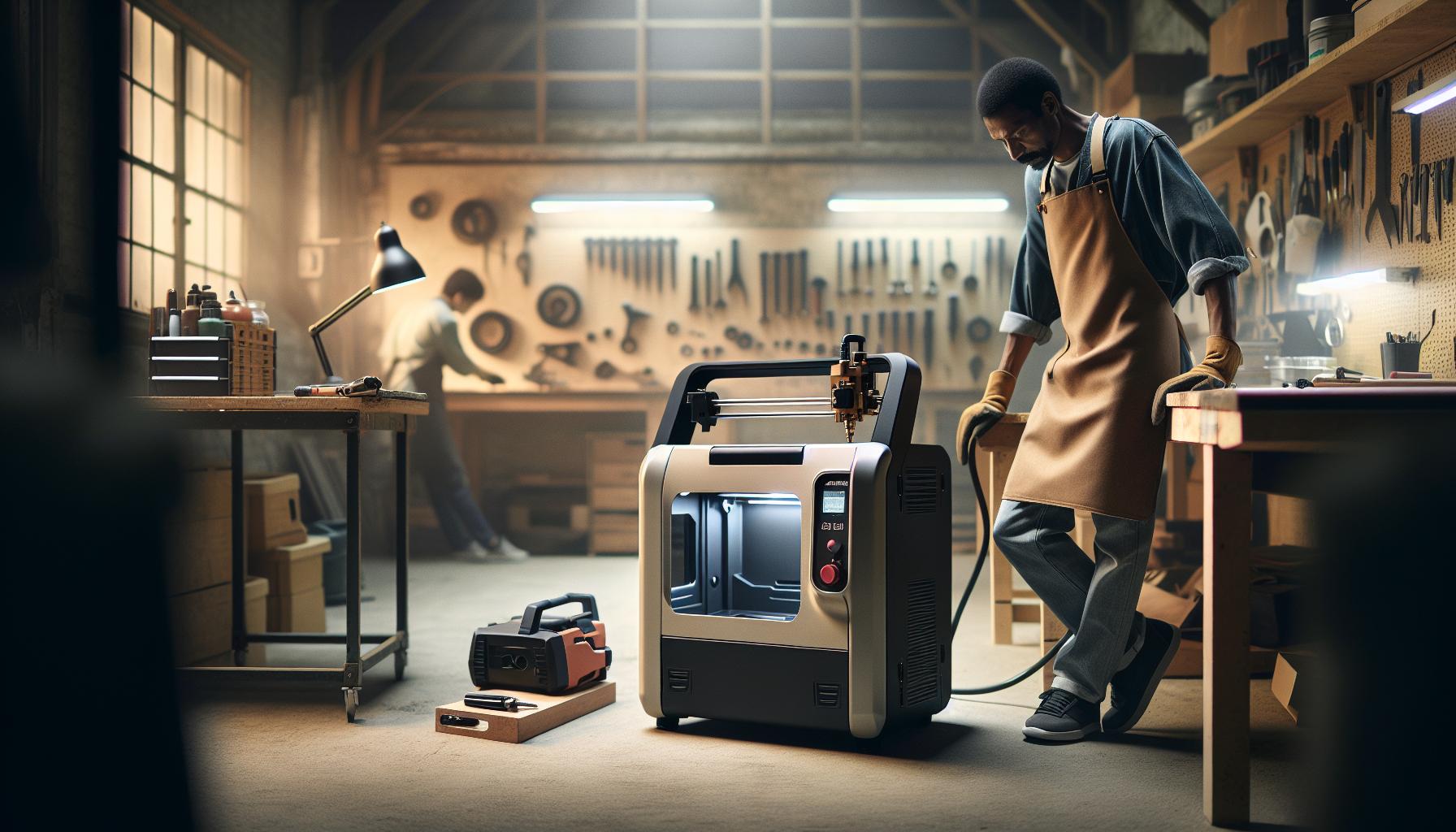
When it comes to selecting a plasma cutter without straining your wallet, there are several compelling options that deliver quality performance while keeping costs manageable. The market has seen significant advancements over the years, allowing for budget-friendly units to incorporate more features typically found in higher-end models. This means that both hobbyists and professionals can find plasma cutters that meet their needs without breaking the bank.
A solid entry-level choice is the Lotos LT5000D. Priced around $400, this machine offers dual voltage capabilities, allowing it to be used with both 110V and 220V outlets. It can cut through a variety of materials like steel and aluminum with a clean finish, making it perfect for DIY projects and light industrial work. Another option is the Eastwood Plasma Cutter, which generally falls between $300 and $600 depending on sales and promotions. This model provides reliability and precision, great for those who are just starting or looking to upgrade from more basic equipment.
For those looking for even more economical alternatives, Harbor Freight’s Vulcan Plasma Cutter can often be found for under $300 during sales. While basic, it offers commendable cutting capabilities for light to moderate tasks and serves well for newcomers honing their skills in plasma cutting. Additionally, always look for seasonal options or refurbished models from reputable sellers-these can provide significant savings while still delivering good performance.
In summary, when seeking budget-friendly plasma cutting options, evaluate the cutting capacity, durability, and availability of consumables. Plenty of reputable brands and models are available that offer robust features at a lower price point, ensuring you get the best value while pursuing your cutting projects.
Features to Look For in a Quality Plasma Cutter
When you’re in the market for a plasma cutter, understanding the essential features can make all the difference between a smooth cutting experience and a frustrating one. Quality plasma cutters come equipped with specific attributes that enhance performance, versatility, and ease of use. These features are particularly important when considering budget-friendly options available in 2024.
One of the primary features to examine is the amperage range of the plasma cutter. A wider amperage range allows for greater flexibility in cutting different materials and thicknesses. Look for machines that can handle both thin and thick materials effectively; this adaptability is crucial whether you’re cutting aluminum for a hobby project or thicker steel for industrial applications. Additionally, a cutter that offers dual voltage capabilities (for example, 110V and 220V) can significantly expand your usage options, allowing you to operate from various power sources.
Another critical element in selecting a quality plasma cutter is the torch and consumables. A well-designed torch will facilitate better control and precision during cutting. Furthermore, check the availability and cost of replacement consumables, as these will contribute to your ongoing maintenance costs. Some brands offer consumables that are more widely available and budget-friendly, which can save you money over time.
User-friendliness is just as important as technical specifications. Find a plasma cutter that features advanced control settings such as adjustable cutting speed and pilot arc technology. These settings allow for cleaner cuts and reduce dross formation. Additionally, machine portability can be a game-changer, especially for on-site work. Models equipped with wheels or lightweight designs can enhance mobility, making them ideal for both hobbyists and professional settings.
Lastly, always consider the brand reputation and warranty when choosing a plasma cutter. Established brands often provide robust customer support and warranty options that can protect your investment. Reading user reviews and seeking recommendations can offer insights that may help steer you towards a reliable model that fits your needs. With these key features in mind, you can confidently select a plasma cutter that meets both your performance expectations and budgetary considerations.
Understanding Cutting Thickness and Material Capabilities
Understanding the cutting thickness and material capabilities of a plasma cutter is essential for achieving optimal results in your projects. When selecting a plasma cutter, it is critical to assess the maximum cutting thickness it can handle effectively, as different materials require different approaches. For instance, while a plasma cutter may smoothly slice through thin sheets of steel, it might struggle with thicker aluminum or stainless steel, which require higher amperage and precise settings for clean cuts.
The material type being cut significantly influences the cutting process. A plasma cutter operates effectively on conductive metals like steel, aluminum, and copper, but nuances exist among these materials. Aluminum, for example, presents a unique challenge due to its thermal conductivity and melting point. To effectively cut aluminum, it’s advisable to utilize a cutter with a high duty cycle, as this allows for continuous operation without overheating. On the other hand, high-carbon steels and similar alloys benefit from a plasma cutter that can maintain precision under high temperatures.
Key Considerations for Cutting Thickness
When evaluating cutting thickness, keep the following in mind:
- Amperage Rating: The higher the amperage, the greater the thickness it can effectively cut. Most plasma cutters have a rated capacity-typically between 30A to 100A-indicating the maximum thickness they can handle.
- Material Specificity: Cut quality can differ based on the material. Always refer to manufacturer guidelines for optimal thickness when working with specific metals.
- Speed Settings: Adjusting cutting speed based on the material and thickness can enhance the cut quality and minimize dross formation.
Real-World Examples
For practical application, consider a project requiring the fabrication of custom metal parts. If working with ⅜ inch mild steel, a plasma cutter rated at around 40A would suffice, ensuring efficient cuts and minimal cleanup. Conversely, when dealing with ½ inch aluminum, you would benefit from a higher amperage cutter, possibly in the 60A range, to maintain a clean edge and efficient operation without excessive wear on the machine.
Ultimately, understanding these aspects will not only enhance your cutting experience but will also guide you in choosing a plasma cutter that fits your unique needs and budget, ensuring quality work and satisfaction for both beginners and seasoned professionals alike.
Cost of Accessories and Consumables for Plasma Cutters
The ongoing costs associated with using a plasma cutter extend beyond the initial purchase price and should be a key factor in your overall budget consideration. Consumables, such as electrodes and nozzles, wear out with use and need regular replacement to maintain optimal cutting performance. Understanding these costs will help you plan more effectively and avoid surprises down the road.
For instance, the standard lifespan of an electrode can range from 1 to 20 hours of cutting time, heavily depending on materials and settings, while nozzles typically last shorter. Replacing these can set you back anywhere from $10 to $50 each, depending on the brand and size. Keeping several of these parts on hand is wise for consistent performance and workflow efficiency, especially if you have specific projects in mind.
When considering gas costs, such as compressed air or auxiliary gases like oxygen or nitrogen, pricing will vary based on your location and supplier. While air systems are often less expensive, using oxygen can improve cut quality on certain materials, albeit at an additional ongoing cost. Estimating these expenses can be done by understanding the frequency and scale of your cutting needs.
Lastly, don’t forget about the importance of protective gear and maintenance tools. High-quality safety equipment-like welding gloves and masks-are essential and contribute to overall long-term expenses. Regular maintenance can also help increase the life of your plasma cutter. Plans for these expenses should be built into your budget to ensure that you can maintain not only the machine’s effectiveness but also your safety and well-being while using it.
Where to Buy Plasma Cutters: Best Retailers
When it comes to purchasing a plasma cutter, choosing the right retailer can significantly influence not only the initial cost but also the quality of support and service you receive post-purchase. Reputable sellers often provide better warranties, customer service, and product knowledge, ensuring you get the best out of your investment. Online marketplaces like Amazon and specialized welding supply retailers are great places to start. They typically offer a wide range of brands at various price points and have customer reviews that can guide your decision.
Local welding supply stores and hardware chains such as Home Depot or Lowe’s can also be excellent resources. These retailers often have staff knowledgeable in welding techniques and can help you select the right plasma cutter based on your specific needs. Visiting a physical store allows you to see the machines in person and discuss your project requirements with a professional advisor.
For those looking for discounted options or refurbished units, websites like eBay or Craigslist can provide significant savings. However, buying used equipment often comes with risks, such as limited warranties or the absence of crucial accessories. To mitigate these risks, ensure the seller has positive reviews and consider requesting a demonstration of the cutter’s functionality before purchase.
Lastly, participation in online welding communities, forums, or social media groups can lead to valuable tips on the best places to buy plasma cutters, and you might find members selling their equipment at competitive prices. Overall, research and compare options across various platforms to make an informed decision that fits your budget and needs, ensuring that your chosen plasma cutter will serve you well for years to come.
Plasma Cutter Maintenance: Save Money Long-Term
Maintaining your plasma cutter is essential for maximizing its lifespan and performance, ultimately saving you money in the long run. Regular upkeep not only prevents costly repairs but also ensures consistent cutting quality, which is crucial whether you’re a hobbyist or a professional. An effective maintenance routine can be straightforward, involving simple checks and occasional replacements of key components.
One of the most critical aspects of plasma cutter maintenance is regularly inspecting and replacing consumables such as electrodes and nozzles. These parts experience the most wear and tear due to the intense conditions during cutting. A worn nozzle can lead to poor cutting precision, increased kerf width, and wasted materials. Depending on your usage, scheduling monthly or bi-monthly checks can keep your cutting performance sharp. Maintaining proper airflow and cooling can also prolong the life of your equipment. Ensure the air filter is clean and change it according to the manufacturer’s recommendations, as obstructed airflow can lead to overheating and malfunction.
Additionally, always keep your plasma cutter clean and free of debris, especially around the torch and work area. This prevents contaminants from entering the system, which could cause malfunction. After each use, make it a habit to wipe down the unit and check for any visible signs of wear on hoses and electrical connections. Investing in a quality cleaning kit specific to welding tools can help streamline this process.
Incorporating these maintenance strategies into your routine will not only enhance the performance of your plasma cutter but also extend its operational life, making it a worthwhile investment over time. By prioritizing care for your equipment, you can enjoy optimal performance and minimize costly downtimes, ultimately keeping your projects on track and under budget.
User Reviews: Real Experiences with Plasma Cutters
User reviews offer invaluable insights into the world of plasma cutters, shedding light on performance, durability, and usability that specifications alone might not reveal. Enthusiasts and professionals alike often share their firsthand experiences which can help potential buyers make informed decisions that suit their needs without breaking the bank. One common thread in many reviews is the balance between price and performance, indicating that a higher price does not always guarantee superior results. For instance, many users have reported satisfactory experiences with mid-range models that deliver high-quality cuts on various materials like aluminum and steel while remaining budget-friendly.
Several users praise brands like Hobart and Miller for their reliability and support services. Reviewers frequently express appreciation for the compact design of certain models, which allows for easy transport between job sites. Others highlight the importance of customer service in their reviews-it’s common to see remarks about how responsive a company is when addressing concerns or providing troubleshooting advice. Many find that having quick access to help or spare parts makes a significant difference, especially during critical projects where downtime must be minimized.
However, users also provide essential cautions, noting components such as consumables can dramatically affect the overall cost of ownership. Many reviews emphasize the importance of factoring in these additional expenses. Consumers have indicated that while initial purchase prices may appear low, the cost of electrodes and nozzles can accumulate quickly. Thus, understanding the total cost of maintaining a plasma cutter is crucial. For those looking for longevity and performance in their investment, opting for brands that offer readily available parts may ultimately save money in the long run, as highlighted by multiple satisfied customers.
Feedback on specific features has also emerged prominently in reviews. For example, longer duty cycles are highly appreciated, especially in professional settings where time equals money. Users often report enhanced cutting experiences when their plasma cutter models include advanced features like pilot arc technology, which allows for cutting through rust and paint without prior cleaning.
In conclusion, reading user reviews can guide potential buyers in identifying the right plasma cutter that aligns with their budget constraints while meeting their cutting needs effectively. Each experience shared is a piece of the larger puzzle that helps demystify the purchasing process for newcomers and seasoned welders alike.
Upgrading Your Plasma Cutter: When and Why
Upgrading your plasma cutter can be a transformative decision that enhances your cutting capabilities and overall efficiency, particularly as demands for precision and material versatility increase. For both hobbyists and professionals, knowing when to upgrade can lead to significant improvements in productivity and finished work quality. One clear indication that it might be time to upgrade is when your projects begin outpacing your equipment’s capacity. If you find yourself frequently replacing consumables or dealing with longer cutting times, a more powerful model could yield better results and save you time and resources in the long run.
Consider evaluating the specific features of your current plasma cutter. Modern units often come equipped with advanced technologies such as pilot arc, which allows for cleaner starts and the ability to cut through rust or paint without pre-cleaning the surface. Additionally, upgraded models may offer longer duty cycles, which can significantly affect performance on larger projects. If you’re looking to expand your capabilities to include thicker materials or faster cutting speeds, investing in a higher-end unit can provide those benefits. It’s also worth paying attention to user feedback on different models, as many experienced welders report noticeable differences in performance and longevity.
When contemplating an upgrade, also reflect on the types of materials you commonly work with. For instance, if your projects have shifted towards composites or aluminum, a machine designed specifically for these materials will enhance cutting quality and efficiency. It’s equally important to factor in the long-term costs, including the availability and price of consumables for the prospective machine. As you weigh your options, you might find that investing in a professional-grade machine that aligns with your specific applications can be more economical over time.
In conclusion, a well-timed upgrade can greatly enhance your capabilities, offering both improved functionality and efficiency. Whether due to increased project complexity, material changes, or the pursuit of excellence in craftsmanship, the benefits of evaluating and investing in the right plasma cutter are clear. Doing your research and considering user feedback about various models will arm you with the information needed to make a decision that supports your welding aspirations and budget effectively.
Plasma Cutter Safety Tips for Beginners
Using a plasma cutter can be an incredibly rewarding experience, allowing for precision cutting in various materials such as metals and plastics. However, safety should always be the top priority for beginners entering the world of plasma cutting, as the process involves high temperatures and electrical components that pose significant risks.
To ensure a safe working environment, it’s crucial to wear appropriate personal protective equipment (PPE). This includes a welding helmet with a suitable shade to protect your eyes from the intense light and UV radiation emitted during cutting. Additionally, fire-resistant clothing, gloves, and closed-toe boots will help shield your skin from hot sparks and debris. It’s advisable to keep a fire extinguisher and a first aid kit readily available in your workspace as a precaution against accidents.
Before beginning any project, familiarize yourself with the operation manual of your plasma cutter. Each model has unique features and settings that affect performance and safety. Always check the power and air supply connections to ensure they are secure and properly functioning. When setting up, make sure the work area is well-ventilated to avoid inhalation of harmful fumes and gases produced during cutting.
In addition to these safety measures, it’s essential to maintain a clean and organized workspace. Remove any flammable materials that could ignite from stray sparks, and ensure your cutting path is free of obstructions. While working, maintain a safe distance from others to prevent accidental contact, and avoid distractions. Always remain focused on the task at hand, as a moment of inattention can lead to serious injuries.
Lastly, practice makes perfect-start with scrap materials before progressing to more significant projects. This will not only build your confidence but also help you understand the machine’s operation and nuances better. Understanding these essential safety tips will guide you as you engage in plasma cutting and will ultimately enhance your skills while protecting your well-being.
FAQ
Q: How much does a plasma cutter cost in 2024?
A: In 2024, the cost of plasma cutters ranges from $200 for portable models to over $3,000 for industrial-grade machines. Prices vary based on cutting capacity, features, and brand. Consider your needs carefully to find a model that fits your budget and applications.
Q: What are the best budget plasma cutters for hobbyists?
A: Some of the best budget plasma cutters for hobbyists include the Lotos LT5000D and the Forney 250 P. Both models offer excellent performance at a reasonable price, typically under $500. They work well for light fabrication and DIY projects, ensuring you get value without overspending.
Q: Do I need accessories with a plasma cutter, and what are their costs?
A: Yes, plasma cutters require accessories such as consumable tips, nozzles, and gases, which can add approximately $50 to $200 annually to your costs. Ensure you consider these expenses in your overall budget when purchasing a plasma cutter.
Q: How can I save money on plasma cutter maintenance?
A: To save money on plasma cutter maintenance, regularly clean the torch and replace consumables as needed. Following the manufacturer’s guidelines can extend the machine’s lifespan, reducing long-term costs. Refer to the “Plasma Cutter Maintenance: Save Money Long-Term” section for more tips.
Q: Are there financing options available for plasma cutters?
A: Many retailers offer financing options for plasma cutters, allowing you to spread payments over time. Check with local welding supply stores or online retailers to find suitable plans that won’t strain your budget.
Q: What thickness of metal can I cut with a plasma cutter?
A: The thickness of metal you can cut with a plasma cutter largely depends on the machine’s specifications. Generally, entry-level models can cut materials up to 1/4 inch thick, while more powerful units can handle up to 1 inch or more. Review cutting capabilities to ensure it meets your needs.
Q: What safety gear do I need when using a plasma cutter?
A: Essential safety gear for using a plasma cutter includes a welding helmet, gloves, and flame-resistant clothing. These protect against sparks and UV radiation. Always refer to safety guidelines to ensure a safe working environment.
Q: Where can I find the best plasma cutter deals?
A: The best plasma cutter deals can often be found at major tool retailers, online marketplaces like Amazon, or during sales events like Black Friday. Comparing prices and checking for manufacturer promotions can help you secure a good deal.
In Retrospect
Ready to take your welding skills to the next level without breaking the bank? Understanding how much to invest in a plasma cutter is just the start. With prices explored, it’s time to make an informed decision. Consider exploring our in-depth guides on MIG welding, TIG techniques, and essential safety protocols to enhance your craftsmanship further.
Don’t wait to elevate your projects! Check out our reviews on the best plasma cutting equipment and subscribe to our newsletter for expert tips and exclusive offers. By keeping up with the latest in welding technology and techniques, you’ll be well-equipped to tackle any challenge-be it repairs, professional projects, or creative endeavors.
Join our community by sharing your thoughts and experiences in the comments below, and discover more resources to empower your welding journey. The best time to invest in your skills is now-let’s get cutting!

